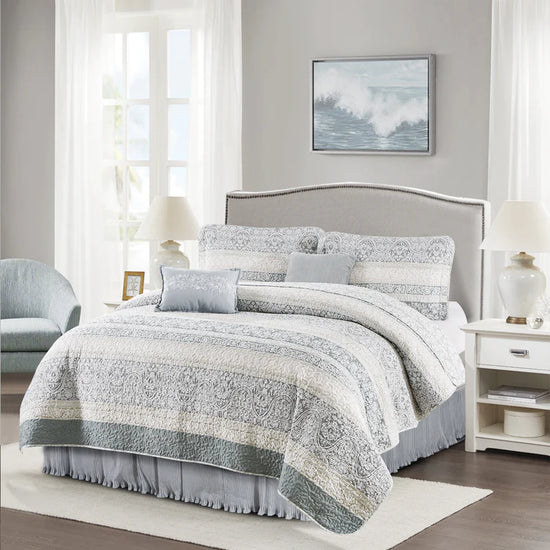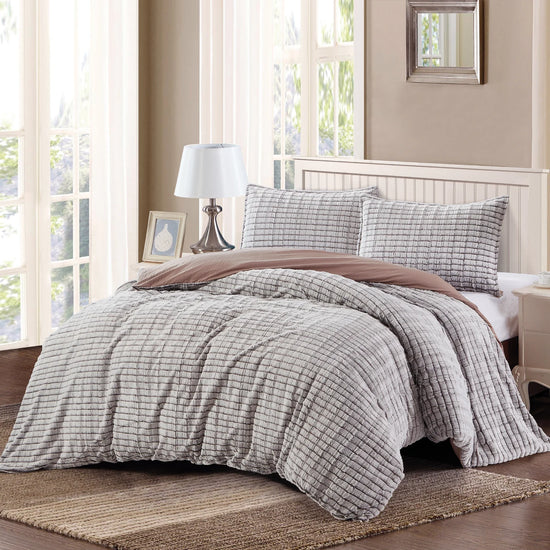Learning how to decorate your home is an exciting journey that allows you to transform your living space into personalized havens. It involves exploring different artistic styles, understanding color schemes, and mastering the art of arrangement. To begin, you can start by researching various design themes and drawing inspiration from magazines, online sources, and even visiting home decor stores. Understanding the colors that evoke desired moods and harmonizing them is crucial in creating a visually pleasing environment.
Don't Begin In A Furniture Store
Many people have heard that going grocery shopping when you're hungry leads to poor decisions. The same is true for furniture stores: don't go in a frenzy just because you have an empty house. Yes, you do require a sofa. But if you choose the pink-striped sectional solely based on its appearance in the store, without taking measurements or considering the rest of the room, you're stuck with it. The rest of the room will have to be built around that sofa, and if it's too big for the space, it'll look awkward for the rest of its life.
Begin with a measuring tape and a notepad in the room you want to furnish.

Understand Your Measurements
It is critical to match the scale of furniture to the scale of a room. A large sectional sofa can easily overpower a small space, while svelte chairs can become lost in a large open loft. Before you begin designing, measure the length and width of each room you intend to decorate, as well as the ceiling height and any obstacles such as stairs, columns, radiators, or other obstructions. To prepare for window coverings, measure the window openings as well as the wall space beneath, above, and to the sides of each one.
The first mistake most people make is buying the wrong size - sofas that don't fit in the room, sofas that don't fit through doorways, tables that are too small, desks that are too big, nightstands that hang into the doorway. Such issues can be avoided by carefully measuring your space.
Make A Floorplan
Once you have your room measurements, you can use them to create a floor plan that gives you a bird's eye view of the entire house. You must be familiar with the area you're working with.
One option is to draw a floor plan on paper with a pencil and a ruler the old-fashioned way. There are apps like Magicplan, Floor Plan Creator, and RoomScan Pro, which aim to make it simple for homeowners to create simple floor plans (some even automate measurements with your smartphone's camera, but double-check those numbers).
Once you've sketched out the space, begin experimenting with furniture placement, making sure that the footprint of each piece is scaled to match the size of the drawing.

Choose Your Way Of Life
This is the difficult part, and there are no correct or incorrect answers. Rooms can be formal or relaxed, traditional or modern, and visually warm or cool. You have to try to discern how you would like to live in a given space to the best of your ability. What are your plans? How many people do you think live there? Are there any kids? What are your goals for how you want to live?"
A home for someone who regularly hosts large dinner parties, for example, should be decorated differently than a home for someone who eats out every night. Someone who plans to host lavish fundraisers should have a different living room than someone who just wants to crash in front of the TV.
Imitate The Pros
To hone your personal style, look through design books and magazines, as well as online resources like Houzz, Pinterest, and Instagram. Develop a dossier of favorite images in the style that you respond to the most.
Once you've found images you like, you should look into the details. Look at where patterns are used versus where solids are used, and whether or not color can be used successfully. It will also help you decide on everything from the type of furniture you want to a potential window covering strategy.
Tape It Down
Use painter's tape in the real space to outline where furniture will be placed on floors and against walls to take floor plan ideas a step further.
How will the rug be placed? Is it necessary to cut it? How far does the coffee table extend?
Create A Budget
There's no way around it: if you splurge on an unexpectedly expensive chair, you'll have less money for the rest of the house. You want to make sure you're spending your money strategically. A budget shows you how to divide the costs of things between rooms. You can still make an exception if you find a one-of-a-kind dining table, but you must consider where else you can cut back to pay for it.

Schedule The Phases
Finishing drywall, refinishing hardwood floors, and painting ceilings are all time-consuming and messy tasks. If at all possible, complete this type of work before moving any furniture or accessories into the space.
If it cannot be avoided, protect large furniture by wrapping it in plastic drop cloths and placing accessories in boxes with tape.
Learning how to arrange furniture, artwork, and accessories in a way that maximizes your space and functionality is essential. Experimenting with different layouts and finding the right balance between aesthetics and practicality will gradually lead to a beautifully decorated home that reflects your unique personality and style.




